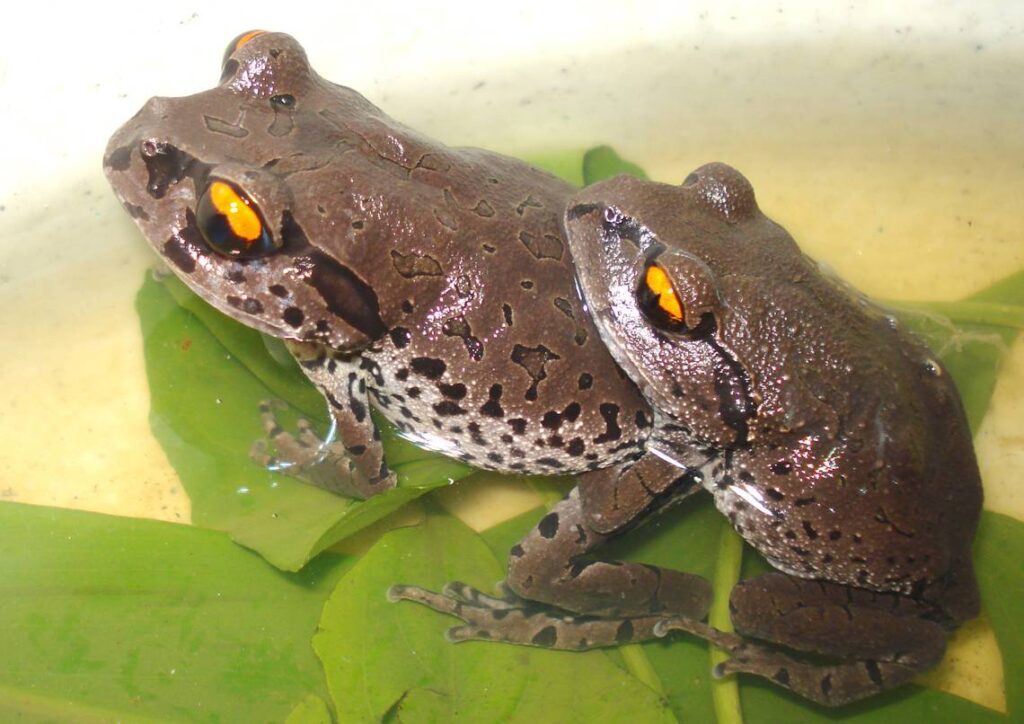As night settled across a forest in northeastern India, some “stocky” creatures with “fiery orange” eyes began calling for mates.
The calls worked — but also caught the attention of nearby scientists. Scientists didn’t know it as they watched the animals’ courting ritual, but they’d just discovered a new species.
Researchers hiked into a nature reserve along the border of Assam and Meghalaya states several times between 2004 and 2005 to search for wildlife, according to a study published April 14 in the peer-reviewed journal Zootaxa.
During the nighttime visits, the team encountered several “slow-moving” frogs in the grass, bushes and streams, the study said. They watched the animals for a while before capturing a few.
Initially, researchers thought the frogs were a known and widespread species. But years later, they began to reconsider. They looked closer at the frogs, tested their DNA and noticed some subtle but distinct differences.
Researchers realized they’d discovered a “cryptic” new species: Leptobrachium aryatium, or the Arya litter frog.

A Leptobrachium aryatium, or Arya litter frog. Photo from Purkayastha, Dutta, Gogoi and Sengupta (2025), shared by Jayaditya Purkayastha
Arya litter frogs are considered “medium-sized,” reaching about 2.5 inches long, the study said. They have “stocky” bodies with “long” limbs and fringed toes. Their “broad” heads have “very large, bulging” eyes that are part “fiery orange” and part black.
Photos show the brownish-gray coloring of the new species. Darker blotches dot its back, sides and arms. Seen from below, it has a “heavily speckled” belly.
Arya litter frogs are nocturnal and live in tropical forests, the study said
Researchers also described the breeding behavior of Arya litter frogs. Females would approach calling males, then “engage in a cyclic chase, with the male attempting to grasp the female from behind,” researchers said. If the male succeeds, the “pair then moves towards a slow-moving side pool of the stream to lay eggs.” If not, the female “moves away.”

Several Leptobrachium aryatium, or Arya litter frogs, including one froglet (bottom right corner). Photos from Purkayastha, Dutta, Gogoi and Sengupta (2025), shared by Jayaditya Purkayastha
Some of the new species’ eggs and tadpoles were found in nearby streams, the study said.
Researchers said they named the new species “aryatium,” a Latin phrase meaning “in honor of Arya,” after Arya Vidyapeeth College in Assam because of “its contributions to the field of herpetology and its support of scientific research in Assam.” Study co-author Jayanta Gogoi is affiliated with the college.
So far, Arya litter frogs have only been found in the neighboring states of Assam and Meghalaya but could have a wider range, pending confirmation, the study said. These states are in northeastern India, bordering Bangladesh and Bhutan.

A mating pair of Leptobrachium aryatium, or Arya litter frogs. Photo from Purkayastha, Dutta, Gogoi and Sengupta (2025), shared by Jayaditya Purkayastha
The new species was identified by its call, size, texture, eyes, coloring, toe shape and other subtle physical features, the study said. DNA analysis found the new species had at least 2% genetic divergence from other related species.
The research team included Jayaditya Purkayastha, Dipankar Dutta, Jayanta Gogoi and Saibal Sengupta.
By ASPEN PFLUGHOEFT/McClatchy News
Aspen Pflughoeft covers real-time news for McClatchy. She is a graduate of Minerva University where she studied communications, history, and international politics. Previously, she reported for Deseret News.



